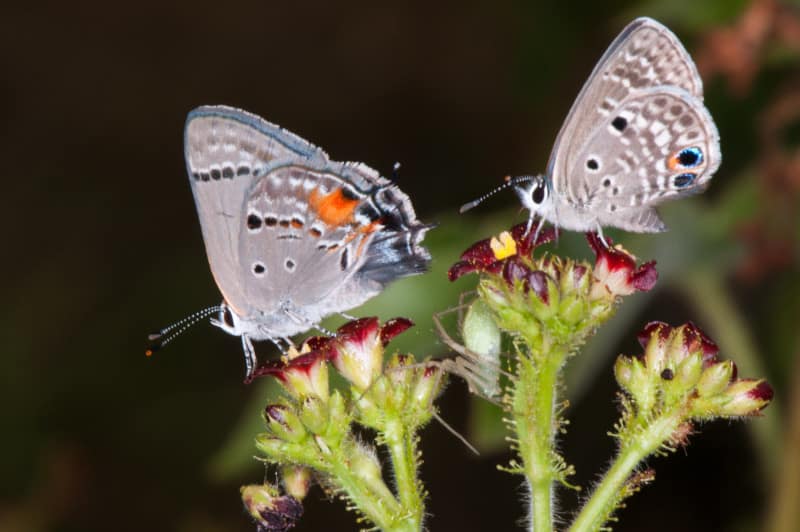
Miami Blue Facts
- Incredibly, the truly gorgeous Miami Blue represents one of the rarest insects in all of North America. In addition, the amazing insect also bears the difficult to pronounce scientific name of Cyclargus thomasi bethunebakeri.
- Quite unfortunately, this wonder of Nature also has a severely restricted habitat range, which compounds matters. Due to these factors, as well as others, the IUCN currently lists the invertebrate as Critically Endangered.
- However, a captive breeding program has recently increased its numbers, albeit in captivity. But, in the wild, its numbers unfortunately continue to dwindle, as it faces multiple threats to its continued existence.
- These include climate change, invasive species, and habitat loss. Members of this species have one of the smallest individual home ranges. That holds true because monitored specimens rarely move more than 25 ft (7.6 m) from the host plant.
Related Articles
Miami Blue Physical Description
But, perhaps most notably, the delicate little Miami Blue proves that beauty comes in all sizes. That is because individuals of the marvelous butterfly, for all their beauty, never attain a large size. In point of fact, these only average a wingspan of only 0.87 -1.1 in (22 – 28 mm).
In addition, like many Lepidoptera, this small but beautiful species displays sexual dimorphism, if in a limited way. On males, the upperside of the wings show a bright metallic blue. However, on females, the pattern shows dark gray with a little blue.
But, in both genders of the marvelous Miami Blue, the underside of the wings shows the exact same pattern of color. This consists of shades of gray, with a band of white on the hindwing. Four small black spots also appear on the hindwing, as well.
- Kingdom: Animalia
- Phylum: Arthropoda
- Class: Insecta
- Order: Lepidoptera
- Family: Lycaenidae
- Genus: Cyclargus
- Species: C. thomasi
Miami Blue Distribution, Habitat, and Ecology
Not surprisingly, the truly eye-catching Miami Blue only inhabits a very tiny portion of the United States, in North America. More exactly, this range consists of only the coastal regions of the state of Florida. It was once quite common, but not anymore.
But even within this highly restricted range, the lovely invertebrate only inhabits very specific areas. These consist of areas of scrub, tropical hardwood forests, and also pine rocklands. Yet sadly, this specificity only serves to make it more vulnerable.
Furthermore, just like some related species, the Miami Blue remains highly dependent upon certain host plants. Individuals of the species commonly spend their entire lives feeding on and living near the same plant on which they were born.
Also, after mating, females typically lay about 300 eggs. But rarely does she lay more than a handful of eggs on the same host plant. Hatching requires about 30 days. Finally, adults of the Miami Blue appear throughout the year, with overlapping generations.
Species Sharing Its Range
Check out our other articles on Earths Geothermal Marvels, Mountain Chicken, Tierra del Fuego, Golden-Handed Tamarin, Harlequin Flower, Australian Ghost Shark, Anegada ground iguana
